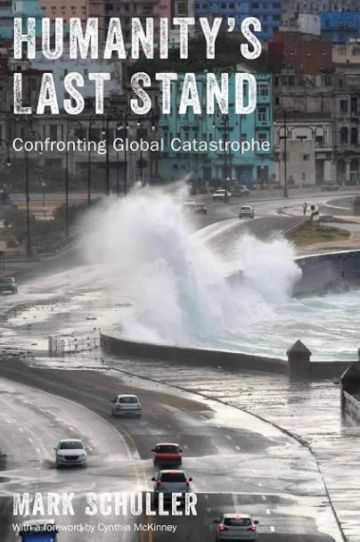
SAPIENS by Emily Brunson and Monica Schoch-Spana
Summary container all summary markers are relative to this container: do not change the id (3)
[no-caption]
Luis Alvarez/Getty Images
Now is a pressing time for vaccinating the U.S. population (and the world) against COVID-19. But there are social hurdles that need to be addressed.
As of this writing, more than 380,000 people have died from SARS-CoV-2 in the U.S. alone. Worldwide, more than 92 million people have been infected, and while many of these individuals have recovered completely, some are experiencing long-term health problems.

A few months into the pandemic, a friend from Cameroon, where I’m from, sent me a video of a news clip. The video starts with shaky footage of a small crowd of people yelling and running out of a drab building onto a city street. They’re carrying what appears to be a human body.
Anthropologist counters Zoom-fatigue: “Your next video conference might resemble a video game”
Why can we spend hours playing video games while many of us get exhausted by much shorter video-conferences?
That is without doubt no bad question that the magazine Inverse asks. They turn to an anthropologist who has researched our relation to the internet for at least 15 years: Tom Boellstorff. In 2007 I wrote about his fieldwork in Second Life about the “virtually human”: “Second Life is their only chance to participate in religious rituals”.
AAA Playlist selection:
- How Australia Beat COVID-19, WBUR
- A Startling Link Between Neanderthals and COVID-19, Sapiens
- The Square Root of Impossible is Black Girls, Zora’s Daughters
- Episode 118 – BMAC: The Best Bronze Age Complex You’ve Never Heard Of, The Dirt
- 86: Seedkeeping And Land Back With Tiffany Traverse Of 4th Sister Farm, AnthroDish
- SoS 104-Doing the Biocultural Work with Dr. Jada Benn Torres and Dr. Gabriel A Torres Colón, Human Biology Association
- Sex and Gender in Osteology: Nina Wilson, That Anthro Podcast
- Mission By Mail: Evangelism in a Pandemic, The Familiar Strange
- Episode 119 – Mausoleum? I Hardly Know ’em!, The Dirt
- SoS 105 – Aha Moments And Middle Childhood Research With Dr. Courtney Helfrecht, Human Biology Association
What Did the Stone Age Sound Like?
SAPIENS by Sarah Wild
Summary container all summary markers are relative to this container: do not change the id (3)
Archaeologists Joshua Kumbani (left) and Sarah Wurz (right) work at a site near the Klasies River in South Africa.
Joshua Kumbani
On South Africa’s southern coast, above the mouth of the Matjes River, a natural rock shelter nestles under a cliff face. The cave is only about 3 meters deep, and humans have used it for more than 10,000 years.
The place has a unique soundscape: The ocean’s shushing voice winds up a narrow gap in the rocks, and the shelter’s walls throb with the exhalation of water 45 meters below. When an easterly wind blows, it transforms the cave into a pair of rasping lungs.
What we know about sex with Neanderthals
Boing Boing by Miss Cellania
Summary container all summary markers are relative to this container: do not change the id (3)
Most people today carry around at least a trace of Neanderthal DNA, the legacy of reproduction between Homo sapiens and Homo neanderthalensis thousands of years ago. Genetic studies show that such interbreeding happened time and again in different populations, and although we don’t know the circumstances, we might assume that a variety of circumstances were involved over time. —

Unsettling the Past: Radically Reimagining Archaeological Knowledge
SAPIENSby Chip Colwell
Summary container all summary markers are relative to this container: do not change the id (3)
For decades, Black and Indigenous archaeologists have rightfully called for a radical reimagining of how archaeology interprets and understands the past. The formulation of archaeologies by, for, and with Indigenous peoples and informed by Black feminist experiences are a testament to the desire of scholars to create a field rooted in decolonial and liberatory praxis. These decolonial interventions work to unsettle the past—reveling in the human complexity of Indigenous and Black life. This panel, comprised of leading Indigenous and Black archaeologists and artists, focuses squarely on the continued work of scholars who are helping to decolonize Black and Indigenous pasts by reshaping how archaeological knowledge is created.
What are the connections between climate change, global capitalism, xenophobia and white supremacy? Marc Schuller does in his new book something rather unusual: He asks big questions. Humanity’s Last Stand. Confronting Global Catastrophe is the name of the book that not only analyzes the state of the world but also offers advice about what to do according to an interview on the Northern Illinois University website.
There is a virtual book launch tomorrow 15.1.2021.

Discover more from Erkan's Field Diary
Subscribe to get the latest posts sent to your email.
